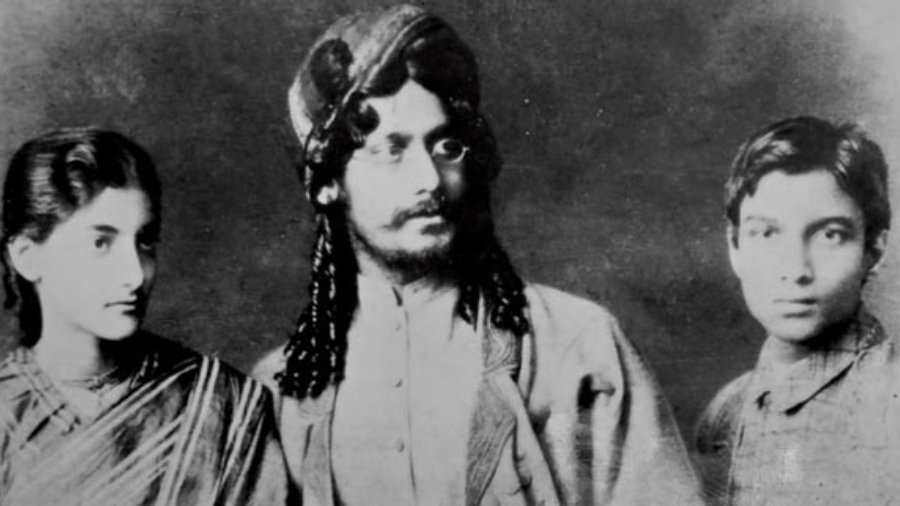A hilsa festival during monsoon is an usual affair at the city’s eateries every year. But keeping up with its innovations, this year Eden Pavilion at ITC Sonar has rolled out a special menu that is anything but basic. Named ‘Poetry in Cuisine’ and curated by the kitchens of Tagore House, Eden Pavilion is paying an ode to hilsa with some delectable recipes from the Tagore family.
Giving us insights of what the food culture with ilish used to be was Sudripta Tagore, a descendent of Satyendranath Tagore, the first ICS, and elder brother of Rabindranath Tagore. He is the grandson of Purnima Tagore, the author of a recipe book Thakurbarir Ranna that captures a lot of recipes from the Tagore kitchen and some of which have been incorporated in the a la carte hilsa festival menu at Eden Pavilion.
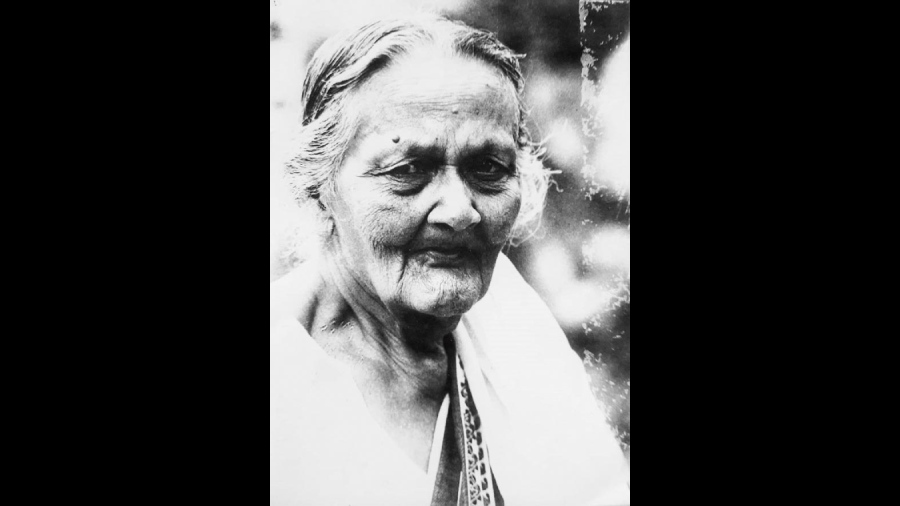
Purnima Tagore
“I was introduced to hilsa by my grandmother Purnima Tagore (grand daughter-in-law of Rabindranath Tagore) and she would tell all these stories of recipes she would cook for us, like Ilish Shorshe Bata, it naturally has a rich taste and she would say — “Jano Rabindranath er jonno aami eita redhechhi” and I would get awed. Our house ilish preparations had an array of taste; our house had one foot in East and one in West of Bengal so we got to try the best food of both the worlds. From the stories that I was told as a child, it is said that a hilsa had to weigh 1-1.5kg else it would get immediately rejected. Then again Indira Devi Chaudhurani had a passion of collecting recipes, I have heard from from my thakurma that she never got into the kitchen but she probably understood the importance of documenting the recipes and that is one handwritten notebook which we still have,” said Sudripta, an educationist and founder principal of Santiniketan Sishutirtha School and a father figure at the Santiniketan Sishutirtha Ashram, founded by his family.

A page from Indira Debi’ s recipe book
What: Poetry in Cuisine, curated by the kitchens of Tagore House
Where: Eden Pavilion, ITC Sonar
When: On till August 28
Timings: 12.30pm to 2.45pm (lunch) and 7pm to 11pm (dinner)
Pocket pinch: Rs 2,500 per person
Call: (033) 44464646 for reservations and more information
The Telegraph picks
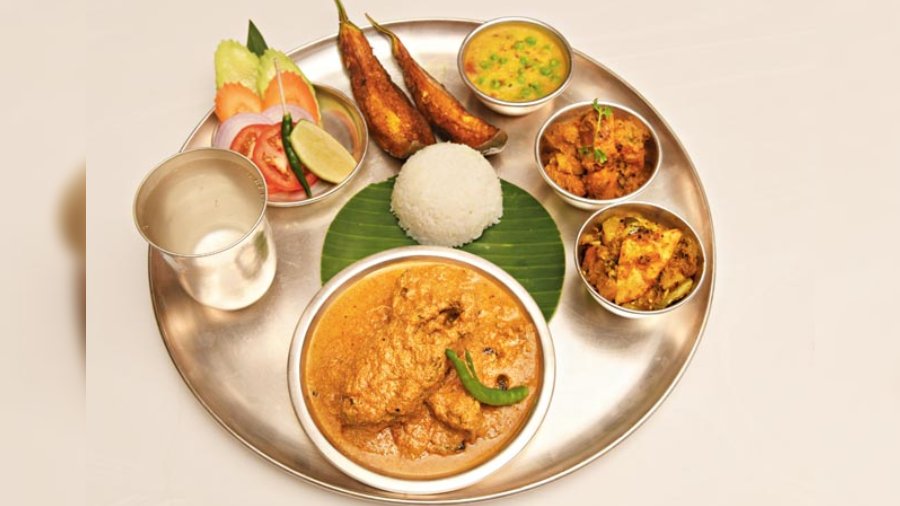
The meal is going to be a memorable one as it not only has a hilsa dish that you can pick from the menu, it also comes with accompaniments like bhaat, Moong Dal Koraisuti Diye, Doi Aloo Dum (a speciality of Thakurbari), Narkel Kora Diye Torkari, Chapor Ghonto, Aloo Potol and Kumro Dalna. The accompaniment depends on the hilsa item you are choosing.
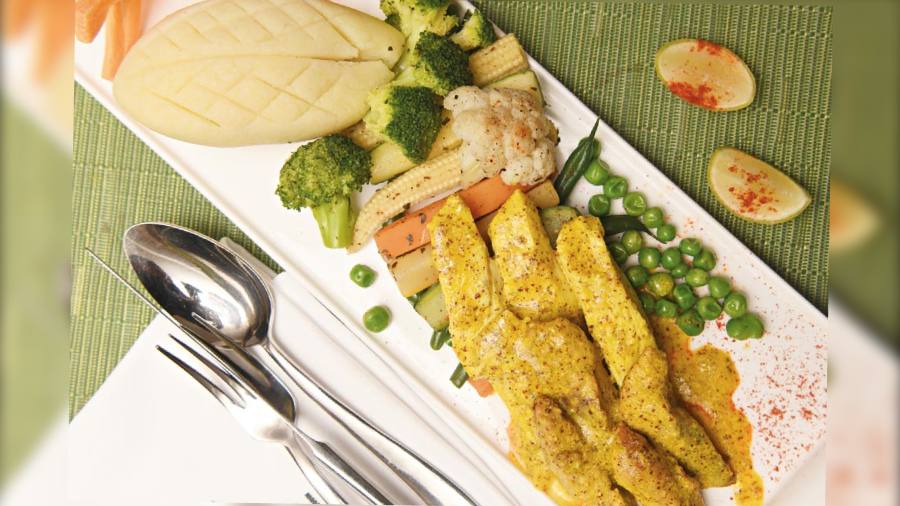
“Rabindranath Tagore travelled the world and he often had guests from far away countries. Atithi deva bhava was something that was considered by everyone; a guest would be treated with utmost love and fed with love too but for foreign travellers hilsa got an international makeover in the form of Smoked Ilish that was boneless and was made into finger size and served with mashed potatoes and grilled veggies that his guests didn’t find hard to eat,” said Sudripta Tagore.

Another continental dish on the menu is Ilish Roast that is accompanied with mashed potato and boiled or sauteed vegetables. The fish is marinated in a paste of onion, ginger and green chillies, seasoned with haldi, salt and lemon juice and tawa fried. The marinade is cooked separately in a pan and then used to coat the fish.

“ITC Sonar sings paeans to the freshest hilsa this monsoon, serving timeless delicacies from the famed Tagore homes. The discerning palate of the Tagore family is legendary, with their kitchens offering a melange that spans Mughlai, Continental and traditional styles of Bengali food. A celebration of history, heritage and culture, this festival of food is in keeping with our ethos to help sustain the intrinsic flavour of this region, part of our initiative towards Responsible Luxury,” said Nitin Bahl, hotel manager, ITC Sonar, seen here with Sudripta Tagore (right).

No hilsa festival is complete without relishing Shorshe Ilish. “My childhood memory with my grandmother during monsoon would be seeing the fish being cooked in lots of mustard paste, the way a classic hilsa should be cooked with green chillies on it,” said Sudripta.
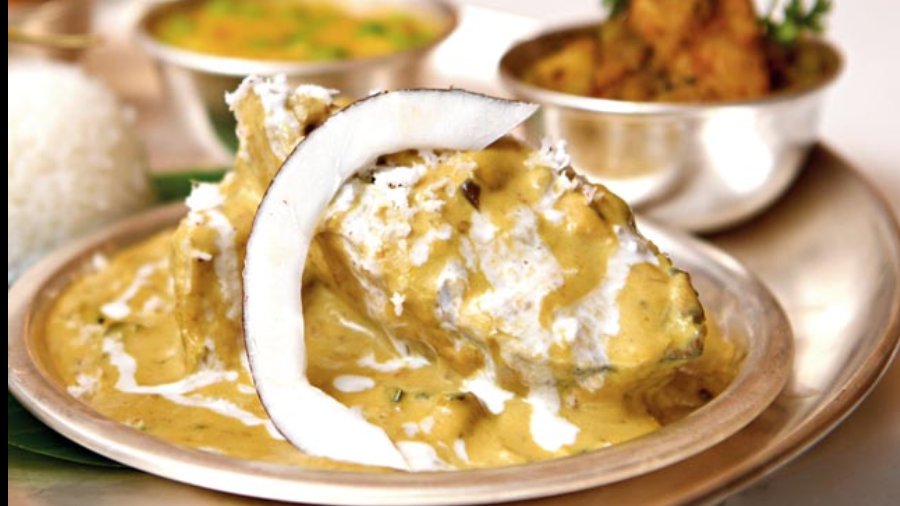
If you have a low threshold of spice, we promise you will fall in love with Narkel Doodh Diye Ilish that is cooked in coconut milk and has a mildly sweet taste. The gravy is thick and satin-silky and goes so well with steaming hot Gobindobhog rice.
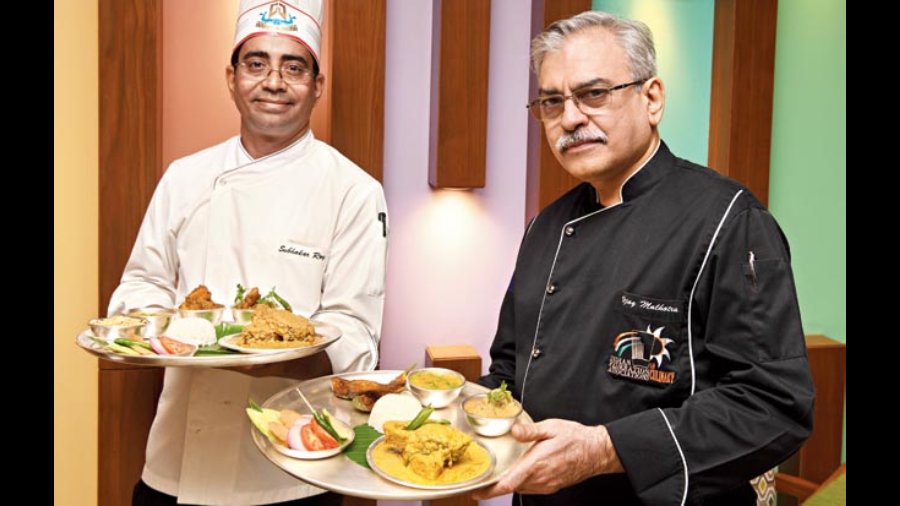
Chef speak: (L-R) Sous chef Subhankar Roy with Vijay Malhotra, area executive chef East ITC Hotels.
“From what we have done in the past this is very classic and has been a great learning experience. Besides the hilsa recipes we got to know something like Chapor Ghonto that is a vegetarian dish with vegetables and bora, which was very interesting,” said Chef Malhotra.
Pictures: B. Halder
